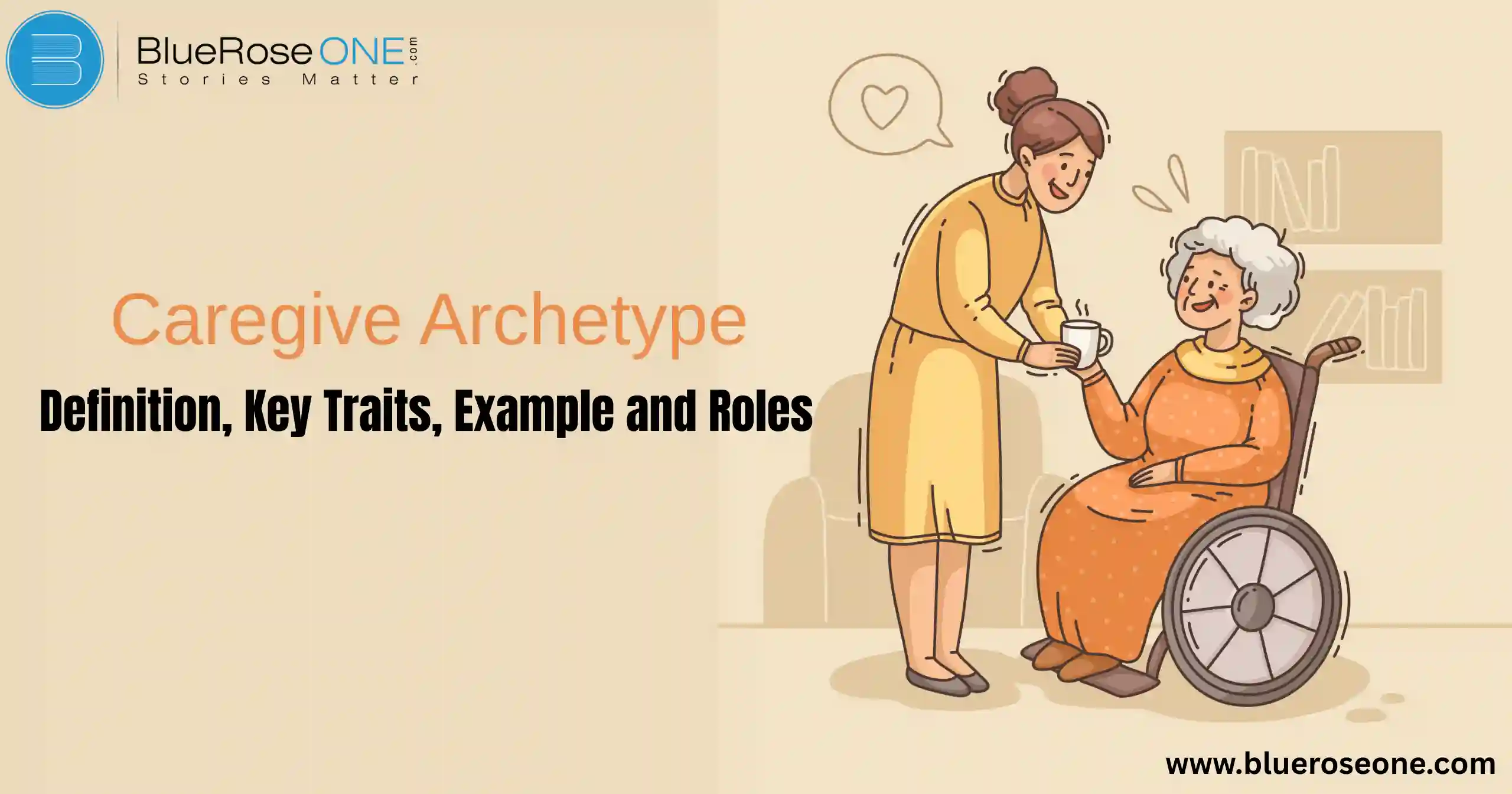Have you ever met someone who just can’t help but take care of others? They’re the ones who bring you soup when you’re sick, lend a listening ear when you’re down, and go out of their way to ensure everyone feels safe and loved. That’s the caregiver archetype in action, a timeless personality pattern that shapes how people show love, compassion, and protection.
Archetypes like the caregiver help us understand human behavior, motivations, and storytelling patterns. From ancient myths to modern films, this archetype remains central to how we view love and support.
What is the Caregiver Archetype?
At its core, the caregiver archetype is defined by selfless devotion to others’ well-being. This archetype symbolizes nurturing, protection, and unconditional care. It’s often associated with the “mother figure,” but it isn’t limited to women, anyone can embody caregiver qualities.
In Jungian psychology, the caregiver represents one of the universal patterns of the human psyche, reminding us of the need for compassion and service in our lives.
You may also read: Sage Archetype: Meaning and Tips for Writers

Core Traits of the Caregiver Archetype
Compassion and Empathy
Compassion and empathy are at the heart of the Caregiver archetype. Individuals with this trait deeply understand others’ feelings and respond with kindness and support. They can step into another person’s shoes, offering comfort during difficult times.
This emotional connection makes them natural healers, nurturers, and protectors. Whether in personal relationships or professional roles, their ability to care selflessly fosters trust, healing, and a sense of belonging for those around them.
Generosity and Selflessness
A defining trait of the Caregiver archetype is their deep sense of generosity and selflessness. They are naturally inclined to put others’ needs before their own, often offering support, comfort, and resources without expecting anything in return.
This willingness to give stems from genuine compassion and empathy, making them reliable pillars in times of need. Their nurturing nature builds trust and emotional safety, allowing others to feel cared for and valued.
Protective Instincts
One of the most powerful aspects of the Carer archetype is their natural protective impulses. They feel a strong obligation to protect others from harm, whether physical, emotional, or social. Their protective mentality frequently makes them dependable characters who prioritise safety and well-being above everything else.
Their nurturing attitude is based on empathy, which leads them to behave as guardians, creating safe conditions in which others can develop without fear or vulnerability.
You may also like: Chloe Walsh Books in Order You Can’t Miss
Patience and Nurturing Behavior
A defining quality of the Caregiver archetype is their deep patience and nurturing nature. Caregivers understand that healing, growth, and support often take time, and they remain calm even in challenging situations. Their ability to listen, provide comfort, and respond with empathy creates a safe environment for others.
This patience, combined with a natural tendency to nurture, makes them reliable figures who foster trust, resilience, and emotional well-being in those they care for.
Strengths of the Caregiver Archetype
The caregiver archetype shines in areas that require emotional intelligence. Their strengths include:
- Building trust and creating safe spaces
- Encouraging personal growth and healing
- Offering unconditional support
They make people feel valued, supported, and loved—qualities the world always needs.
You may also like: Bunny vs Monkey Books in Order – Ultimate Reading Guide
Weaknesses of the Caregiver Archetype
Every archetype has its shadow side. For caregivers, the main weaknesses are:
- Burnout: Constantly giving without receiving can drain them.
- Neglecting self-care: They often put others first to their own detriment.
- Over-involvement: Their desire to help can sometimes smother or enable others.
The Role of the Caregiver Archetype in Daily Life
In Family Settings
In familial situations, the Carer archetype frequently manifests as caring parents, helpful siblings, or protecting grandparents.
They offer emotional support, manage home responsibilities, and protect the safety of loved ones. Their function promotes stability and harmony, strengthening family relationships via empathy, patience, and unconditional love.
In Workplaces
In workplaces, the Caregiver archetype shows up as supportive leaders, mentors, or colleagues who prioritize team well-being. They foster collaboration, reduce stress, and create a safe environment where others feel valued.
Their empathy and reliability not only build trust but also boost morale, leading to stronger teamwork and productivity.
You may also like: Nothing Like the Movies: A Must-Read Lynn Painter Romance
In Communities and Friendships
In groups and friendships, the Carer archetype fosters trust and belonging. These folks frequently serve as peacemakers, providing emotional support and direction during stressful situations.
Their nurturing presence fosters social bonds, promotes cooperation, and guarantees that everyone feels appreciated, making relationships more meaningful and long-lasting.
Caregiver Archetype in Mythology and Literature
From ancient myths to timeless novels, the caregiver archetype appears everywhere. Think of Demeter from Greek mythology, the goddess of harvest and maternal love, or Marmee in Little Women, the ultimate nurturing mother.
These characters embody the universal role of providing comfort, guidance, and unconditional love.
The Caregiver Archetype in Modern Culture
On-screen, caregivers come alive in countless forms. Characters like Molly Weasley (Harry Potter), Marilla Cuthbert (Anne of Green Gables), or even Samwise Gamgee (The Lord of the Rings) remind us of loyalty, protection, and nurturing hearts.
Psychological Perspective of the Caregiver
Carl Jung saw archetypes as universal patterns within the collective unconscious. The caregiver archetype represents the “mother figure,” though not limited to biological mothers. Psychologically, it emphasizes our need for nurturing, guidance, and emotional support.
You may also like: How to Read Jack Carr Books in Order: Ultimate Guide
Positive Impact of the Caregiver Archetype
Caregivers are the glue holding society together. Their kindness inspires compassion in others, creating a ripple effect of goodness. They foster supportive environments where people can grow, heal, and thrive.
Challenges Faced by Caregivers
Despite their importance, caregivers often struggle with:
- Emotional exhaustion
- Lack of recognition
- Difficulty setting boundaries
Without proper support, caregivers can feel invisible and overwhelmed.
Examples of the Caregiver Archetype in Real Life
- Parents and Guardians: Everyday nurturers.
- Nurses, Teachers, Social Workers: Professional caregivers shaping lives.
- Unsung Heroes: Neighbors helping during crises, friends supporting in tough times.
Balancing the Caregiver Archetype
To avoid burnout, caregivers must:
- Practice self-care without guilt
- Set healthy boundaries
- Balance giving with receiving
After all, even caregivers need care.
You may also like: Lottie Brooks Books in Order: A Quick & Fun Guide
How to Develop Caregiver Achetype Qualities
You don’t need to be a natural caregiver to embody these traits. Try:
- Cultivating empathy through active listening
- Performing acts of kindness daily
- Developing emotional intelligence to connect meaningfully
Conclusion
The caregiver archetype is a timeless symbol of love, compassion, and selflessness.
While caregivers may face challenges like burnout, their role in shaping supportive environments cannot be overstated. By balancing self-care with service, they ensure that kindness continues to flow in the world.
You may also like: All Colleen Hoover Books in Order Listed by Series & Date















